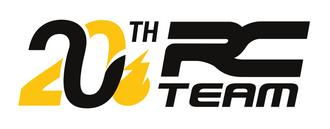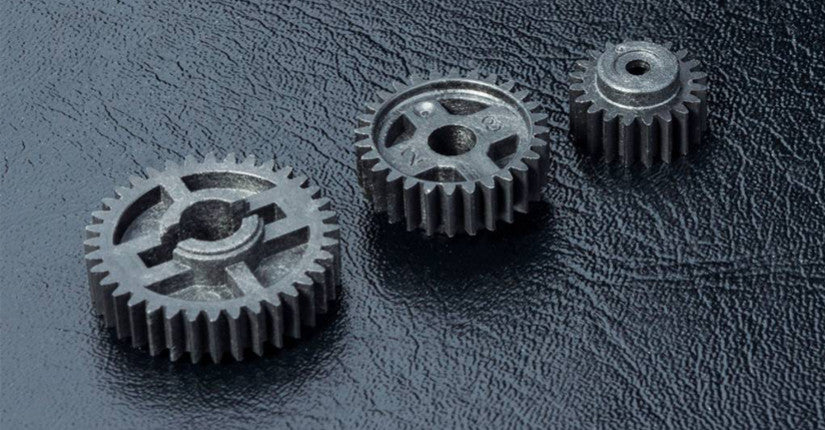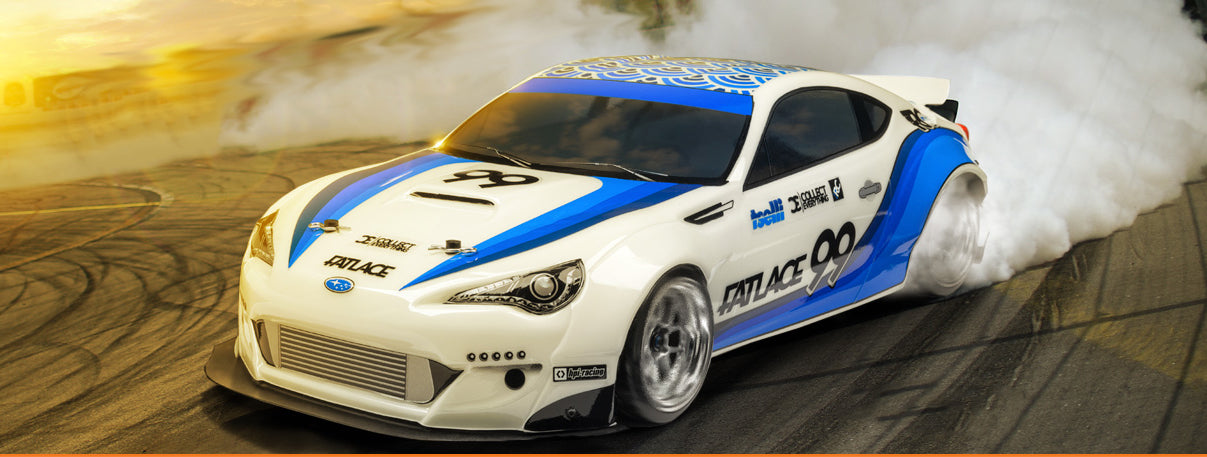Changing your car's gear ratio is an easy way to modify the performance of your RC car. It is therefore very important to know how to set up a good gear ratio! Indeed, a bad configuration can cause overheating problems and performance issues. You can also increase speed at the expense of torque, or vice versa. You can adjust your car's gear ratio by changing the motor or the gearbox.
What are a Gear and a Spur gear?
What is a Gear?
The Gear is the very small gear that fits onto the engine and is usually made of metal. The most common metals are aluminum, steel, and titanium. The { {1133323}} is the slightly larger gear on the transmission side that is driven by the { {1131740}} motor. It is often made of plastic and sometimes of composite materials or even Kevlar. When the engine runs, it drives the Gear motor, which in turn drives the Spur gear, which is connected to the car's drive shaft. Changing the Gear will have a more noticeable effect on performance, so if you want to make more subtle changes, change the Spur gear. Change both for maximum effect or finer adjustments.
What are the characteristics of sprockets?
The characteristics of sprockets and crowns are the diameter of the axle, the number of teeth, and the pitch. Generally, the number of teeth (expressed in T) and the pitch (expressed in P or DP) are engraved on the Gear, but some manufacturers omit this information. The pitch refers to the size of the teeth. There are a few common sizes that we use in RC, such as 32 pitch ( 32P), 48 pitch ( 48P), and 64 pitch ( 64P). There is also a metric variant on pitch: 1 Mod, 0.8 Mod, and 0.6 Mod. It is important to know that 32 pitch and 0.8 Mod are the same thing and can be used interchangeably. The higher the pitch, the smaller the teeth.
Why change the gears on my RC car?
Although changing the diameter of the wheel can affect the final gear ratio of your car, the most common way to change this parameter is to modify the Gear and Spur gear. This is because increasing or decreasing the number of teeth on one of the gears affects the number of times the Gear must turn to rotate the Spur gear one full revolution (hence the name gear ratio).
An electric car uses an on-board battery, so there is always a limited amount of energy available to use during a race. The gear ratio must therefore be optimized to ensure that the battery is not completely depleted before the car crosses the finish line or you complete your race, but also to prevent the motor from overheating and improve its performance.
How does the gear ratio affect performance?
For each pair of Gear/Spur gear in an RC car, there is a gear ratio. It corresponds to the number of teeth on one gear divided by the number of teeth on the corresponding gear. Gear ratios are important because they allow us to better control speed and torque.
Speed and torque are inversely proportional: when one increases, the other must decrease. Optimal output speed can be achieved by adjusting the gear ratio. Another point to note is that it is much easier to extract power from a motor brushless at high speed (high RPM) than from a more basic engine. All this is made possible by modifying the transmission ratio.
High gear ratio, low speed
- Small Gear, large Spur gear
- High torque, low RPM
- Fast and lively acceleration, lower maximum speed.
- Less stress and heat on the engine and ESC
- Longer battery life
Your car will accelerate very quickly, but the top speed it reaches will not be as high. The car will be easier to control at high speeds, but the high torque and instant power can feel aggressive. High-end controllers allow you to program a softening of the throttle or a reduction in punch. This can make the car much easier to drive, resulting in a smoother ride and faster lap times.
With low revs, you will benefit from longer running times and lower operating temperatures for the ESC and motor. This is because the engine is under less strain. However, be careful not to under-rev car as this can also cause overheating.
Low gear ratio, high RPM
- Large Gear, small Spur gear
- Low torque, high RPM
- Slower acceleration, higher top speed
- More stress and heat build-up on the engine and ESC
- Shorter battery operating time
The car does not accelerate as quickly but reaches a higher top speed. With less torque, the motor has to work harder while the car is accelerating. This additional stress on the motor results in higher operating temperatures. This will reduce the operating time per battery charge compared to low speed. An excessively low gear ratio should be avoided, or measures taken to ensure that the engine and ESC do not overheat. Installation of a fan Additional directed towards the engine and cutting a few ventilation holes in the bodywork should help.
Finding the right balance
In theory, a small, winding On-road with lots of curves or tight turns will be suited to low revs, while high revs will be preferable for a large, open On-road with long straights. However, high revs with smoother acceleration may be easier to drive in certain situations, while a car with low revs on a high-grip track may be difficult for beginners to control.
On low-grip tracks, or in wet/icy conditions, a high gear ratio (and therefore a car running at low revs) will give you more traction when exiting corners, so this setup is worth trying even on small technical tracks. Smooth driving will help you achieve consistent lap times, so try to find the right ratio for the type of track you want to drive on.
Choose the right gear ratio for your motor
How to calculate the gear ratio?
We have seen that the ratio between the Gear and the Spur gear is very important in order to influence the performance of your RC car. To calculate this ratio, simply divide thenumber of teeth on the Spur gear by the number of teeth on the Gear. If your car is equipped with a 20-tooth (20T) Gear and a 100-tooth (100T) Spur gear, your ratio is 5:1 (100 ÷ 20 = 5), which means that the Gear must make five revolutions to turn the Spur gear one revolution.
For example, let's say your friend's car runs well, has good acceleration and top speed, and the battery and motor are not overworked. You have the same car, the same engine, and a battery of equal capacity, so you want to use the same gear ratio. It has a 20T Gear and a 100T Spur gear for a ratio of 5:1. If your Spur gear is a 125T, which Gear should you use? Divide the teeth on the right gear by 5 (since you are aiming for a 5:1 ratio), which gives us 125 ÷ 5 = 25. You should use a 25T Gear. Even if you have larger gears than your friend, the ratio is still the same: 5:1. Although you can select the gear ratio of your choice, you must take into account the motor used. Your RC car manual should provide recommendations on gear ratios.
Which gears should I choose based on my motor?
A high-speed motor (13.5T, 17.5T, etc.) will have more torque but a lower top speed. Therefore, a higher-speed motor will need to be combined with a larger Gear and a smaller Spur gear in order to use all that torque at low revs. Low-speed motors such as 5.5t or 8.5t will generally need to be combined with a smaller Gear and a larger Spur gear.
If you find that your car seems to lack power, you may have the wrong gear ratio. Consult your RC car's instruction manual to find out the recommended range of pinions and crowns for your motor.
How does tire size affect the gear ratio?
Two factors influence the distance traveled by an RC car during one rotation of the motor. These two factors are the gear ratio and the diameter of the tires. A simple mathematical formula can be used to combine this information, allowing you to accurately calculate the millimeters per revolution.
If you take two identical cars with identical gear ratios and put small diameter tires on one and large diameter tires on the other, the vehicle with the larger tires will travel further with each rotation of the wheels. To truly understand the total gear ratio of your car, you need to consider the size of the drive wheels (or more precisely, their circumference).
To measure the distance traveled by the tire in one revolution, calculate the circumference of your tire by multiplying pi (3.14) by the diameter of the tire. For example: 3.14 x 5 inches = 15.7 inches. If we divide this number by the 5:1 gear ratio, we get this result: 15.7 inches ÷ 5 = 3.14 inches. This means that the car moves forward 1.31 inches for every revolution of the Gear.
What is "pitch"?
The "pitch" of a gear refers to the size of its teeth and, more specifically, the distance between a point on one tooth and the corresponding point on the next tooth. The higher the pitch, the smaller the teeth. The pitch of your car's gears has no effect on the gear ratio: a combination of 100T/20T always has a ratio of 5:1, whether you use gears with a pitch of 32, 48, or 64. However, certain gear pitches are better suited to certain applications.
32-pitch pinions
This large pitch is no longer found much on 1/10 electric vehicles, but it is still found on combustion engine cars,{ {593a2e7dcc52d2b8fefada2e9f6ac854}} and { {1642cc6114401c71ada17b6c9c2fadab}} 4x4s. In fact, they use 32-tooth sprockets to cope with the high power exerted on their transmissions.
48-tooth sprockets
This intermediate pitch saves you from having to choose between 32-tooth sprockets (durable, but limited in options) or 64-tooth sprockets (lots of options, but the small teeth are more fragile). Standard 48-tooth off-road sprockets offer the perfect balance between gear ratio options and durability.
64-tooth sprockets
This is the preferred sprocket size for drivers who race On-road mainly because of the large number of gear ratios available and the extra-smooth mesh of the very fine teeth. Since On-road cars do not have to endure jumps and shocks, 64-tooth sprockets hold up well.




